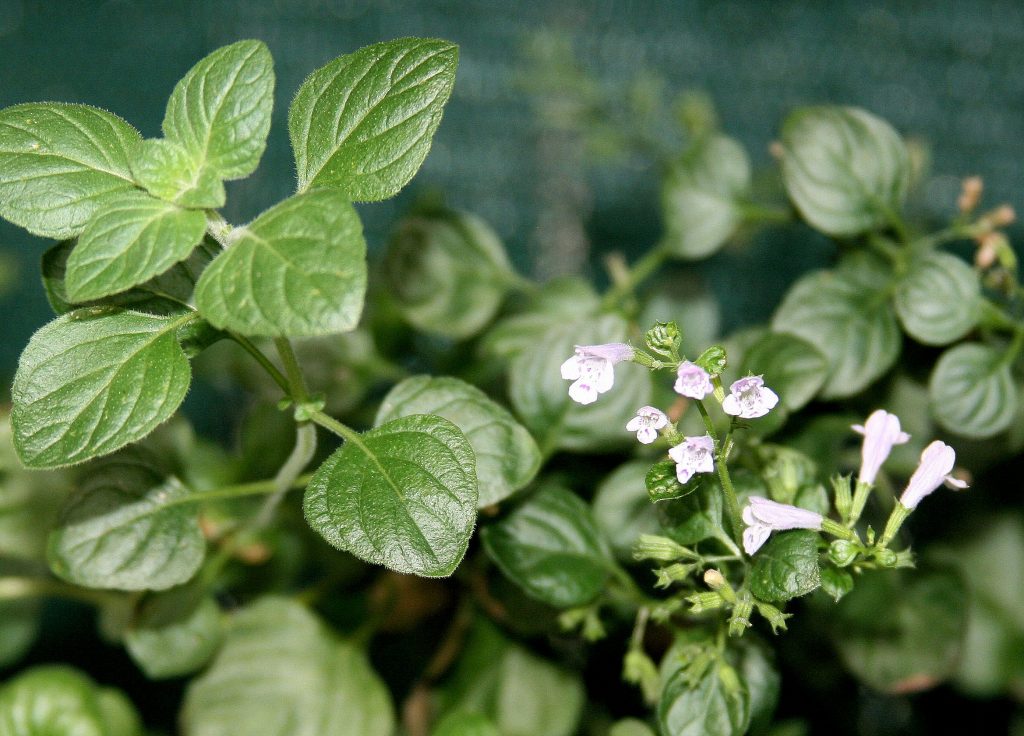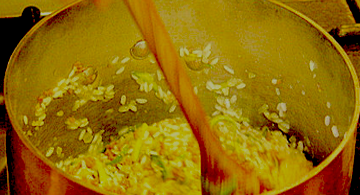
Calamint, known as nepitella, nepetella, or niebbitella in Italian, is a perennial shrub with an appearance similar to oregano. Common names and regional terms for nepitella include basil thyme, calamint, lesser calamint, mountain balm, mountain mint, calamento, calaminta, mentastro, and mentuccia. Its synonym is Satureja calamintha var. nepeta or Satureja nepeta.
Calamint grows easily in low mountain areas, in pastures, and along roadsides in Italy, Mediterranean countries, the UK, and other countries of moderate to cool climate. This plant grows close to the ground with its thin branches vining out over soil. With its broad oval leaves, it is easy to mistake it for a variety of oregano or sweet marjoram. Run your hand over the plant and there is no mistaking its signature aroma of mint + camphor.
Traditions: Dating back millennia, calamint was recommended as a powerful medicinal herb. It remains so. Calamint contains a volatile camphoraceous oil which is a stimulant. Leaves and stems are crushed and pounded very fine or whole leaves can be used to make water tonics or tea. Traditionally this tonic or tea is drunk with honey. It was recommended for improving digestion and for respiratory infections, loosening phlegm, healing the liver, moving out urine, and various stomach ailments.
Applications: Traditional applications are used today. Calamint should not be consumed by pregnant women.
Culinary Uses: In central and southern Italy, calamint or nepitella is a very popular culinary herb. Especially in Tuscany, nepitella is considered indispensable when preparing fresh mushrooms, especially porcini. It grows wild and often is found growing near porcini mushrooms, so both are harvested together. Especially in fresh produce stores in Florence, customers expect to receive a branch of nepitella when they purchase wild porcini mushrooms. Some shopkeepers say that they cannot sell the porcini if there is no nepitella!
Calamint is good added to egg, fish, meat, and zucchini dishes. Infuse a good olive oil with nepitella by immersing 6 or more fresh branches. Leave for up to 12 days, then filter, store the oil, and use in cooking. Its assertive flavor is so strong in aroma and taste, apply only a small amount in cooking. Emphasize nepitella’s characteristics by blending it with oregano and mint in dishes.
* This synopsis imparts valuable information that could be beneficial as part of a wellness program. Its purpose is to open the thought process to consider including herbs and spices as natural supplements in personal regimens. Briefly stating how the plant was valued and used historically in different ages and cultures, it lists some current uses. If interested in this particular plant, please extend your research via books and articles for more details and uses.
With increasing interest for including alternative therapies with standard drug therapy, research continues, so this topic evolves continuously. Please consult your wholistic and holistic practitioners, homeopaths, nutritionists, dentists, and physicians to keep yourself updated if you choose to incorporate or ingest the plant in any form for medical purposes.







